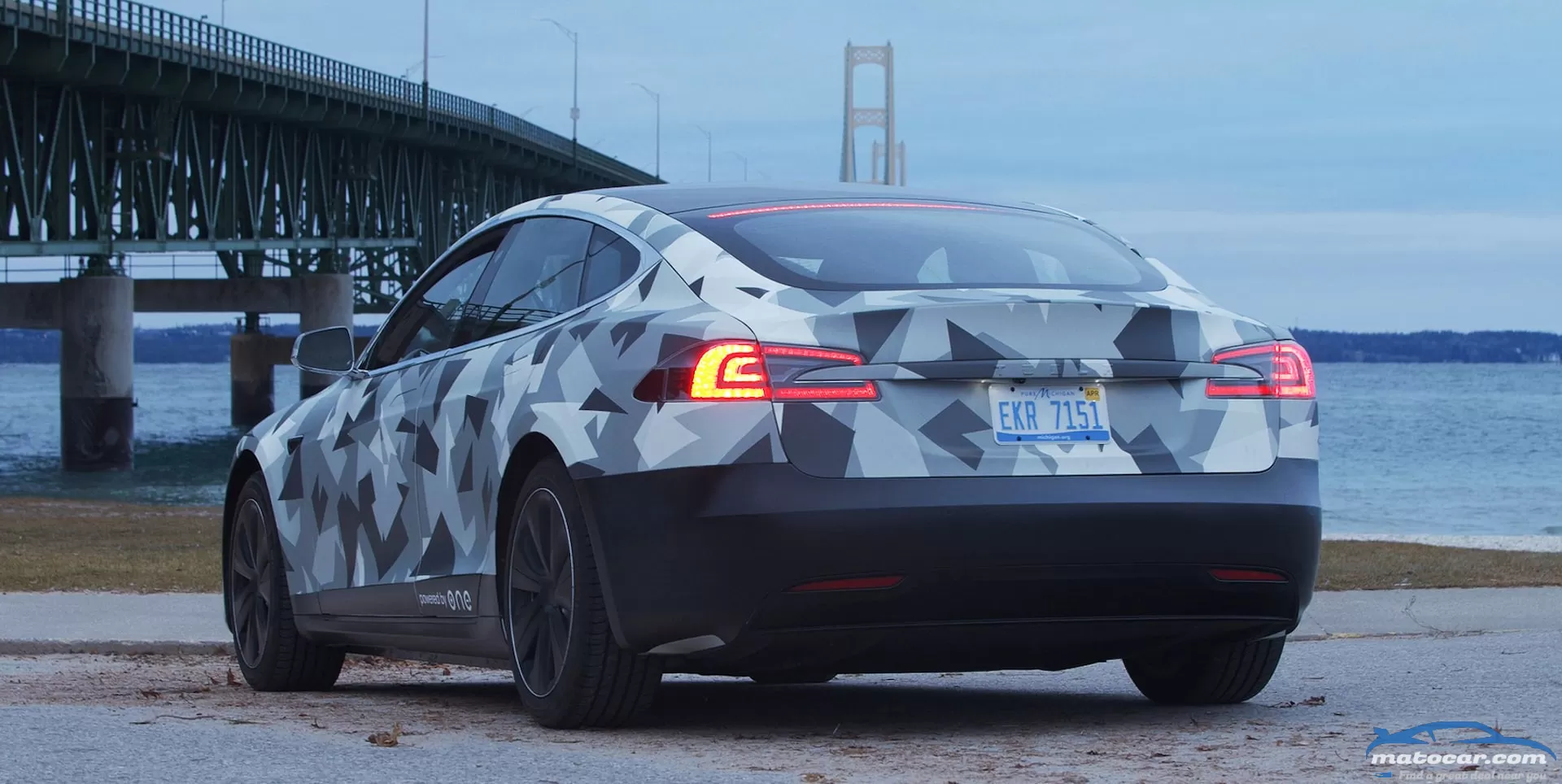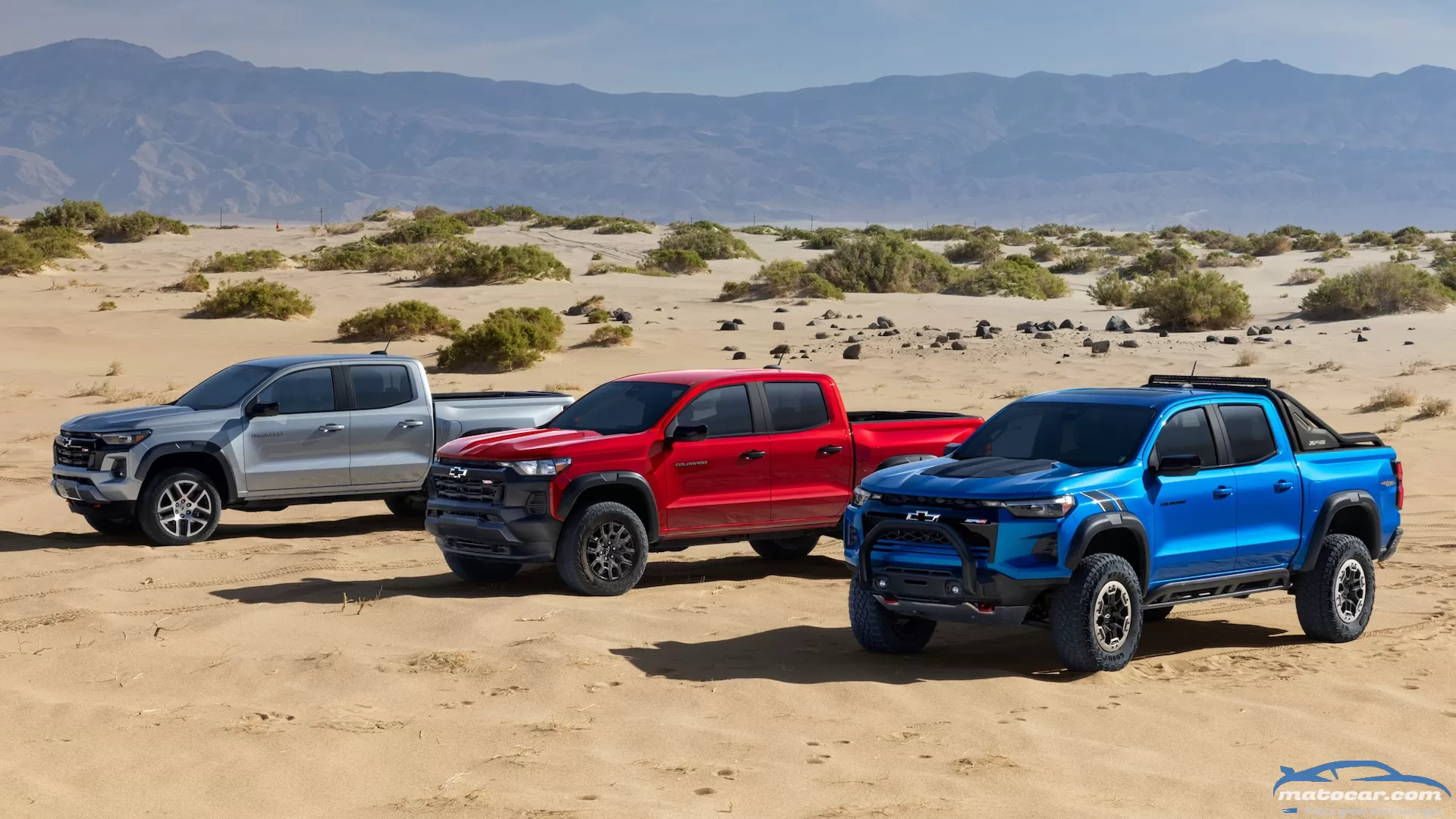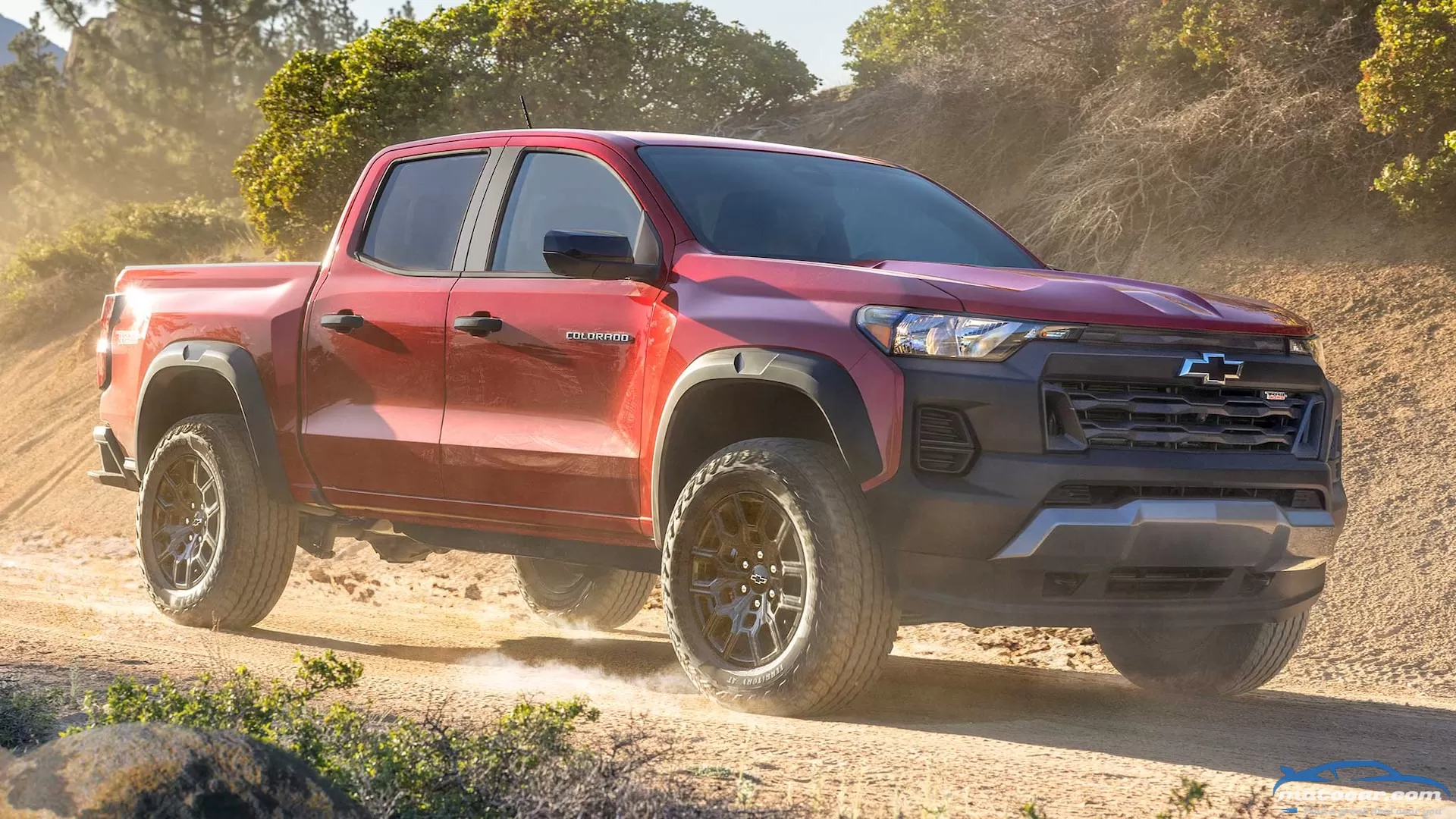ONE Gemini Battery Nearly Doubles Tesla Model S Range

Time and again, the number one complaint we hear about EVs (besides non-existent mandates) is driving range. To some, even a Tesla Model S doesn't have enough range, even though versions of it now top 400 miles on a charge. Even the affordable Chevrolet Bolt gets 259 miles. What mileage would be enough for these naysayers? 500 miles? 600? How about 752 miles without needing a charge?
Our Next Energy—stylized as ONE and based out of Novi, Michigan—has achieved just that using a battery the same size as the Tesla Model S P100's battery pack. Dubbed "Gemini," the battery pack employs ONE's own battery management and controls, and it was installed in an otherwise unmodified the Model S.
The Trip
According to ONE, its upgraded Tesla Model S tester went on a road trip from its headquarters north up the "Mitten" of Michigan and back, traveling on highways and averaging about a speed of 55 mph. The semi-scientific trip hooked east over through Detroit using I-96 and then followed I-94 west to Ann Arbor before joining with State Route 52 to get back to I-95 and Lansing. Then the team took I-69 to stay on the west side before heading north on State Route 127 and merging with I-75 around Pere Cheney.
https://youtu.be/fWj2YCdoc9A
They continued north until they crossed over the Mackinac Bridge to get on State Route 2 for a bit before turning around somewhere close to Brevort. This time, they merged back with I-75 and stayed with it, going through Gaylord, close to Bay City, through Saginaw and Flint before arriving back at their Novi headquarters. The entire trip was 752 miles without needing to stop to recharge the Gemini battery and a total discharge rate of C/10, or about a 20 kW rate. (The drivers, of course, needed and took breaks.) According to ONE, the battery hovered at around 32 degrees and required no active cooling for the entire (apparently cold-weather) drive.
Dyno Evaluation
The eye-popping driving distance wasn't enough, however. After arriving back at ONE headquarters, the team put the Gemini-equipped Model S on a charger at a rate of 1C, or about a 200 kW charge rate. For now, that's all that has been tested and ONE has not tried a higher rate than that. Once at full capacity, the Model S was driven to a third party dyno facility, where it was put through a simulated 20 percent Urban Dynamometer Driving Schedule (UDDS) and Highway Fuel Economy Test (HWFET) drive cycles and 80 percent driving at a constant 55 mph. While observing roughly the same Wh per mile consumption, the dyno test was able to achieve 882 miles of range—only a 17 percent difference over what they saw during their real world drive.
No Exotic Materials
The Gemini isn't some wild idea battery using unobtainum minerals, nor is it some unusual chemistry. We asked Mujeeb Ijaz, president and CEO of ONE, what the battery was made of. "The production intent Gemini battery will be LFP (Lithium Iron Phosphate, also known as LiFePo4) for the traction battery portion," he said, "and a new cell ONE is designing for the range extender without cobalt, nickel, and graphite." We also asked about the weight of the cells and how many they were able to fit in the Model S, however, Ijaz stated that the cells were still experimental, but, "We had a total of 203.7 kWh at a system level."
The standard P100 pack is roughly 103.9 kWh, so they were able to double the capacity without needing a larger space and without much of a weight penalty, either, and that is the goal. "The ONE Gemini battery aims to eliminate range as a barrier to electric vehicle adoption by doubling the available energy on board in the same package space," said Ijaz. He and ONE feel that the current solution of adding more chargers just isn't entirely feasible, especially if you need to stop every 150 miles with smaller battery packs.
Market Expectancy
While the ONE Gemini battery isn't quite ready for market now, it's not far off. Ijaz said that ONE will have a production sample ready by 2023 with production of their Gemini battery pack by 2026. An exact cost of the Gemini hasn't been released yet, either, but ONE expects it to initially cost the same as current nickel-cobalt based lithium batteries. If all of this can be accomplished and put into production, the Gemini solves another portion of the "EV problem" detractors scream about, as well: the mining of cobalt.
We'll still need lithium, but new recycling techniques have proven to be able to extract that from current batteries with a reduction of wastewater and the energy needed for its extraction, eliminating or, at the very least, reducing the need to mine for new lithium deposits. ONE also said that it is "currently developing a proprietary range-extender cell, which deletes the graphite materials used in conventional anodes and contributing to a significant reduction in cost." It's also working on a new cathode material that "can be sourced at less than $0.46/lbs versus conventional batteries at around $10/lbs." Just more proof that owning an EV won't be as expensive or even as "environmentally unfriendly" as EV haters like to portray it.
You may also like
The 40th Tokyo Auto Salon started off with modest fanfare on Friday, as the typical media day routine of press conferences, product debuts, prototype reveals, and the ever-popular TAS staple of pinup girls and race queens transpired.While day two typically devolves into a more frenzied state due to the doors being opened to the public, the COVID situation caused people to mill about in a very civilized manner, as we all social distanced as best as possible. Mask mandates as well as the downloading of a Bluetooth-dependent app that collected data from all nearby smartphone devices to record exposure risks were required for all visitors.As for the contents of the show itself, both the Gazoo Racing GT3 Prototype and the mildly modded orange Fairlady Z at the Nissan booth seemed to maintain the strongest grip on visitor interest, with lengthy lines to get in and see both vehicles remaining in effect nearly up to closing time each day.Surprise encounters included bumping into our old friend Mr. GT-R Hiroshi Tamura, meeting Yamamoto-san of Racing Factory Yamamoto to discuss his bonkers Figaro/S2000 rocket ship (which took home 3rd place for best tuning car), and catching up with the ever enthusiastic Sakamoto-san of Garage Active for some long overdue GT-R talk.All InclusiveBut perhaps the most pleasant surprise was seeing all of the smaller shops and independent builders in attendance. For beneath all of the glitz, glamour, girls, and gregariousness of this event lies a far more meaningful message. Tiny operations, each with a few employees, striving to do things differently and thinking outside of the box are how this whole show started 40 years ago. Today, many of them remain the unsung heroes of all things JDM, who, in our eyes deserve just as much recognition as the big names in the industry.And while companies like Varis secured first place for its race-ready "Kamikaze Yaris," and the tastefully modded Nissan Fairlady Z stole the show for best concept car, it was an off-road van build that surprised people the most when it came to award time.A 4x4 specialty shop by the name of Outclass Cars took home top honors for best family car of the show with a Toyota Alphard van unlike any other. Converted with imported Lexus LM minivan parts sourced from Taiwan and outfitted with a slew of one-off Outclass 4x4 focused components, then topped with a GIWORKS JAPAN rooftop tent and cargo carrier, this build was a real stand-out at the show this year for the public, the press, and apparently the judges as well.It was this very van that made our coverage of Tokyo Auto Salon 2022 possible, as the Tokushima-based crew graciously allowed me to hitch a ride to and from the event in their capable 4x4 caravan. The return trip even allowed room for two more hitchhikers: A gleaming trophy, and a plaque proudly decreeing that a 4x4 grocery-getter could indeed be considered one of the best builds in all of Japan. Talk about icing on that JDM cake!With that said, here are some of the other highlights from the three-day affair trying to get back to full speed after the cancellation of last year's event. Here's hoping to 2023 continues the momentum.This Fairlady Z concept, which combines some old school Z-car with the new Z's already retro-heavy aesthetic, certainly made its mark on the show. The reworked front fascia, mild flares, and orange/black treatment offer a nice clash of old and new without moving too far away from the modern Z.Your eyes aren't deceiving you, this is in fact a six-rotor swap! Tucked neatly into the engine bay of a Eunos Cosmo, this build began in October and though it's not 100% complete just yet, it's getting close. Many of the parts are sourced from Australia, and the plan is to finish it up by spring and put it to the test in both drag and time attack race events.The off-road market in Japan, much like the U.S., is at an all-time high. Interest in rugged options from the aftermarket have increased dramatically and personalized compact offerings, like this GReddy-equipped Suzuki Jimny, are all the rage.The FD chassis RX-7 has long served as a staple at the Tokyo Auto Salon and that won't be changing anytime soon. The fan favorite's classic body lines, capable chassis, and roomy engine compartment make it a tuning platform with almost limitless options. This version was widened and fitted with an array of vents as well as Vision Type DC mirrors that are typically attached to Honda builds.There's really nothing subtle about the new GR Yaris, so it only makes sense that Varis Japan would go wild with its aero add-on, aptly naming the creation "Kamikaze." The hood, portions of the bumper, lip, side skirts, rear diffuser, and wing use a very large carbon fiber weave pattern like that of the brand's side project, Solid and Joker, which we saw back in 2017.Bulked up fenders feature vents on the front pair, similar to Varis' FK8 Type R kit.With so much talk about the new Toyota GR86, many forgot about the previous generation 86—but not this builder. Tubbed front fenders surround a highly-polished single-turbo 2JZ swap outfitted with custom hard lines and a tucked engine harness.Subaru's STI E-RA Challenge Project, which relies on four electric motors to generate just over 1,000 hp, was a show within the show.Exotics were also on hand in pretty large numbers. Liberty Walk brought quite a few cars to TAS, including this Ferrari sporting its signature wide body aero and vented carbon fiber hood.Other LBWK demo cars included this trio of yellow—a Lamborghini, Corvette, and Mclaren.On the wild side, this sixth-generation Toyota Celica received a (partial) MkV Supra front end conversion.
Factory off-road trucks have never been hotter. Every year, manufacturers introduce new models, trims, special editions, and off-road packages that often sell out in record time. This trend continues with Chevrolet's introduction of the all-new 2023 Colorado midsize pickup. When the current generation of the Colorado was introduced for the 2015 model year, it came with Chevy's optional Z71 off-road package. In 2017, the high-performance ZR2 model was added to the lineup. Now, for 2023, Chevrolet has added not only the new Colorado Trail Boss to the lineup, but the ZR2 Desert Boss as well. With these additions, off-road variants of the Colorado outnumber the standard trims two-to-one. Read on as we break down some of the differences between the 2023 Colorado Z71, Trail Boss, and ZR2 models.Related: 2023 Chevrolet Colorado ZR2 First Look—Concerns Addressed
The 2023 Chevrolet Colorado is a brand-new midsize pickup truck. If you're thinking, "well, that's obvious," you're right. But we do point it out because, when Chevy resurrected the previously compact Colorado as a midsize truck for 2015, it introduced a not-quite-as-new rig, a modified version of a truck it had been selling for years in global markets such as Thailand and Brazil.Alas, with a Silverado-derived frame, American-market-specific powertrains and cabin appointments, the Colorado was hardly some cobbled-together beast. The outgoing pickup is one of the best midsize pickups out there—to be accurate, it is the best, despite its age. Snatching an existing truck from Thailand proved to be such a savvy move that Ford basically did the same thing when it brought back the once-compact Ranger from the dead as a larger midsize truck—and Colorado competitor—for 2019. Given how the old Colorado was in some ways already several years old when it landed stateside eight years ago, the 2023 Colorado's ground-up newness, therefore, is one of its biggest standout features.New Is as New DoesJust looking at the new Colorado, the styling clearly benefited from this redesign. Where the old Colorado was soft-edged and fairly generic-looking, in keeping with the more budget-conscious global model, the new truck adopts a bold, assertive new look that positively screams "America, truck yeah!"Chevy moved the front axle forward, lengthening the wheelbase 3.1 inches in the process and shortening the front overhang. The net effect is a longer, more horizontal hood and improved approach angles for the nose, a boon off-road. The designers capitalized on this blocky new shape with a Silverado-like mug with slim headlights and bold inserts that give the impression of a full-width, full-height grille yawning from the bumper to the hood. (Also like on the Silverado, that mug is slightly different on nearly every trim level.) Along the body sides, there is a deeper channel cut into the door skins, which help visually puff out the squared-off fender bulges front and rear.Another big change? The previous-generation Colorado's entry-level extended-cab body style was pitched in the dustbin. You can now only purchase the Colorado as a four-door crew cab with a short bed (5-foot, 2-inch bed). Chevy says this move simplifies things on its manufacturing end, but primarily gets in line with the configuration that attracted the most buyer interest on the last Colorado. One Little Engine that CanAlso simplifying the lineup is the 2023 Colorado's move to a single engine choice. A 2.7-liter turbo I-4 engine replaces the old Colorado's entry-level 2.5-liter I-4 (which was limited to base Work Truck models anyway), 3.6-liter V-6, and 2.8-liter turbodiesel I-4 options. This engine isn't entirely new; it was introduced a few years ago on the larger Silverado 1500, and strategy-wise, it is comparable to the Ford Ranger's single, lineup-wide 2.3-liter turbo I-4 engine.Unlike the Ranger's four-cylinder, the Colorado's is available in three states of tune, offering up at least some choice. Entry-level Colorado Work Truck and LT models make 237 hp and 259 lb-ft of torque. Optional on those Colorados and standard on the Z71 and Trail Boss models is a 310-hp, 390-lb-ft version. And limited to the range-topping Colorado ZR2 (which we've covered in depth here), the ultimate off-road iteration of the new truck, is a 310-hp, 430-lb-ft 2.7-liter I-4. Chevy says that, for the most part, the power differences are achieved via tuning of the computers, though the lowest-output version has some minor hardware differences. Every Colorado mates its 2.7-liter I-4 to an updated eight-speed automatic transmission.Fuel economy estimates for the new engine are forthcoming, but the power story—both compared to the old Colorado and its primary competitors—is interesting. With 310 hp in top guise, the Colorado ties the Nissan Frontier's V-6 in terms of hp, but smashes it in the torque department in its upper two states of tune, so we're dubbing it the most powerful midsize pickup you can buy. Granted, the old V-6 at one time held the same title (in both the Colorado and its GMC-badged twin, the Canyon), with 308 hp, before the Frontier's current engine arrived for 2020; the now-discontinued diesel engine produced a mighty 369 lb-ft of torque, but that figure's easily eclipsed by the midrange 2.7-liter I-4. Even the new base models generate nearly as much torque than the old V-6, albeit at a higher rpm (5,600 vs. 4,000). The higher-output 2.7s deliver their peak torque at just 3,000 rpm.The 2.7-liter turbo is a truck engine through and through, having been designed from the outset for duty in the full-size Silverado (and playing an unusual secondary role in the Cadillac CT4-V). In the smaller, lighter Colorado, it should prove quite burly. It also includes standard cylinder deactivation, which can shut down two cylinders under light loads. Yep, that means this'll be the only (temporarily) two-cylinder midsize pickup you can buy.Five Grades, Mostly Off-RoadEven though the Colorado comes in Work Truck, LT, Z71, new-to-Colorado Trail Boss, and hardcore ZR2 guises, all five models share key standard features, including a new (sharp-looking) 11.3-inch touchscreen with wireless Apple CarPlay and Android Auto, an 8.0-inch fully digital gauge cluster, eight bed tie downs, and a segment-exclusive electronic parking brake. Chevy says the base Work Truck and mid-grade off-road Trailboss models share a more "rugged aesthetic that is ready for work and play" inside, which we take to mean more basic, abuse-resistant, and plastickier cabin materials. The LT swaps in silver trim, plusher accents, and a leather-wrapped steering wheel, while the Z71 gets a "sportier ambiance" with black and red accents and a mix of cloth and vinyl on the seats.Again, like the newly bold exterior, the Colorado's interior goes from uninspired to competitive, with a brash, full-width dashboard panel and its round outboard air vents giving us plenty of Camaro feels. The new touchscreen perches in the middle, tombstone-style, but close to the steering wheel for what looks like a comfortable reach. There are more upmarket details throughout, though most examples—the stitching on the dashboard and padded panels around the center console—are limited to the higher trim levels. And like the Camaro, the central air vents are buried low on the dash; that pays off for the ergonomics of the climate controls, which nestle up under the touchscreen, but is probably not great for airflow above chest height for front-seat occupants. A drive mode selector lives on the left of the console on models so equipped (mostly the off-road models), pushing the shifter to the right.Other differences between the models are clearer from the outside. The Work Truck gets an all-black-plastic face like the larger Silverado WT, 17-inch steel wheels, and that's pretty much it. LT models distinguish themselves with more streetable 17-inch wheels and tires, more body color elements on the front end, and more chrome. Finally, there are the trio of off-road versions, ranging from the relatively tame Z71 to the Trail Boss (which gets a 2.0-inch suspension lift and burlier tires) to the ZR2 (which sits 3.0 inches higher than WT/LT/Z71 models and has a wider track). The grille and bumper treatments get wilder the closer to the ZR2 you get, with the ZR2 out-crazying the rest of the lineup with flared fenders, meaty bumpers, and even an available bed-mounted roll bar with lights and beadlock-capable wheels via a special-edition Desert Boss package.Off-road equipment varies from optional four-wheel-drive on the WT and LT to a standard limited-slip rear differential (standard on Z71 and Trail Boss) to power-locking front and rear diffs on the ZR2, which also once again rides on Multimatic DSSV spool-valve, frequency selective dampers. Those fancy shocks passively take the edge off the worst terrain with valving that slows faster inputs and handles slower amplitudes more softly. The net result is better wheel control over washboard surfaces and more controlled bump stop events. Ground clearance tops out at an outstanding 10.7 inches for the ZR2, with the Trail Boss standing 9.5 inches off the deck and the other Colorados perched at 7.9 to 8.9 inches.If you're thinking Chevy's inclusion of three off-road models and switch to more aggro styling and the single crew-cab bodystyle signals an intent to chase after adventurous types with the new Colorado, you're right. The automaker also hopes the new truck bed's available 110-volt household outlet, motorcycle-tire indents in the forward bed wall, and newly available in-tailgate storage will appeal to weekend warrior types. That tailgate storage, in particular, carries whiffs of the Honda Ridgeline's in-bed "trunk," an underfloor, watertight cubby with a drain that doubles as a cooler. The Colorado's lockable, weathertight hollow tailgate is less useful, probably, but at 45 inches wide and 4 inches deep can still probably be stuffed with ice and some cold snacks.If Chevy can keep the current truck's decent road manners and roomy interior in place while improving things with the new 2.7-liter engine and expanded off-road offerings, consider the 2023 Colorado a ringing success. But it'll have stiff competition: Ford is on the cusp of launching its also-all-new 2023 Ranger, and Toyota's sales-leader Tacoma is about to be redesigned, as well. We'll see how the new Colorado shakes out when it goes on sale midway through 2023.2023 Chevrolet Colorado Specifications BASE PRICE $28,000-$50,000 (est) LAYOUT Front-engine, RWD or 4WD, 5-pass, 4-door truck ENGINE 2.7L/237-310-hp /259-430-lb-ft turbo DOHC 16-valve I-4 TRANSMISSION 8-speed auto CURB WEIGHT 4,750-5,300 lb (mfr) WHEELBASE 131.4 in L x W x H 213.0-213.2 x 84.4 x 78.8-81.9 in 0-60 MPH 7.0-7.5 sec (MT est) EPA CITY/HWY/COMB FUEL ECON TBD EPA RANGE, COMB TBD miles ON SALE Spring 2023 Show All




0 Comments